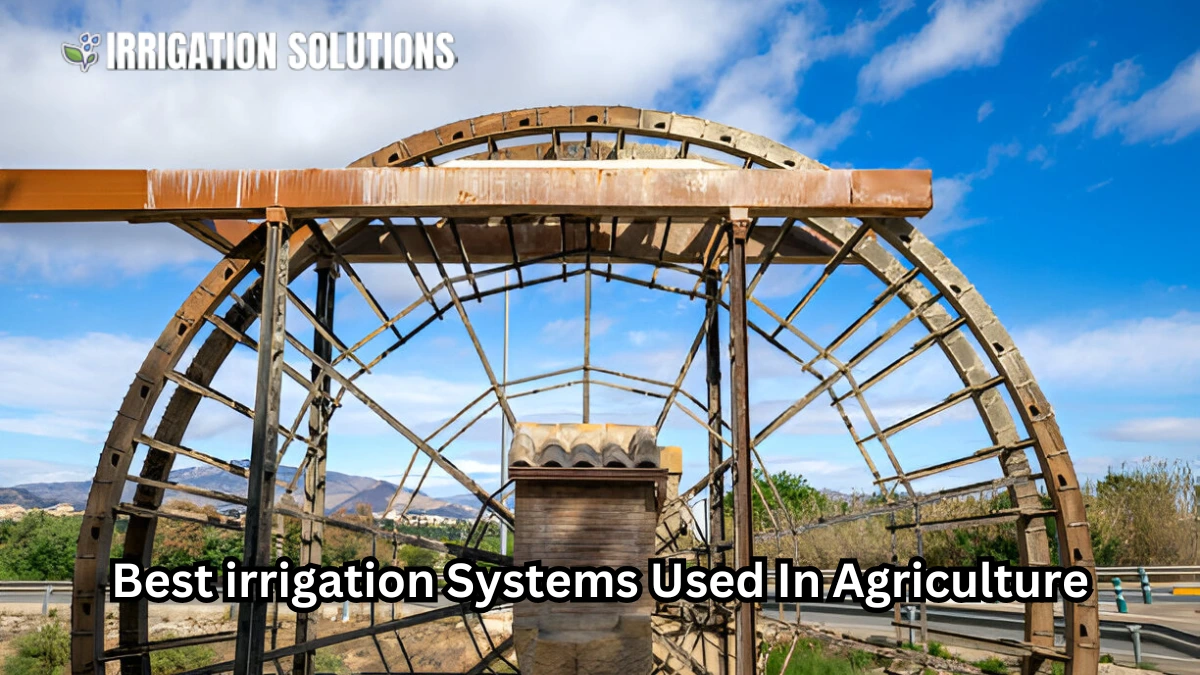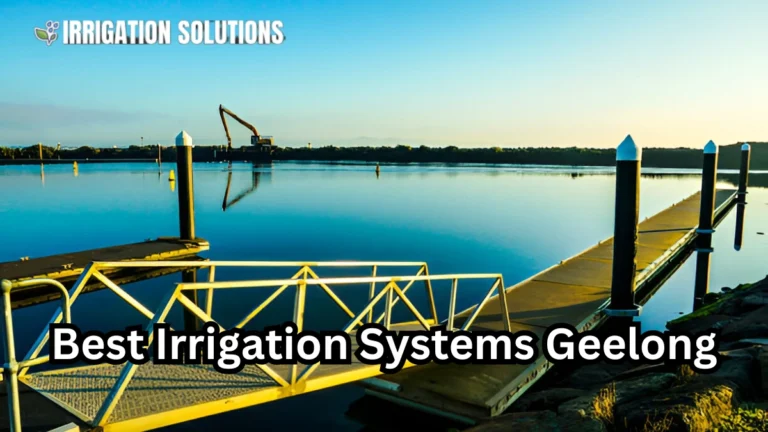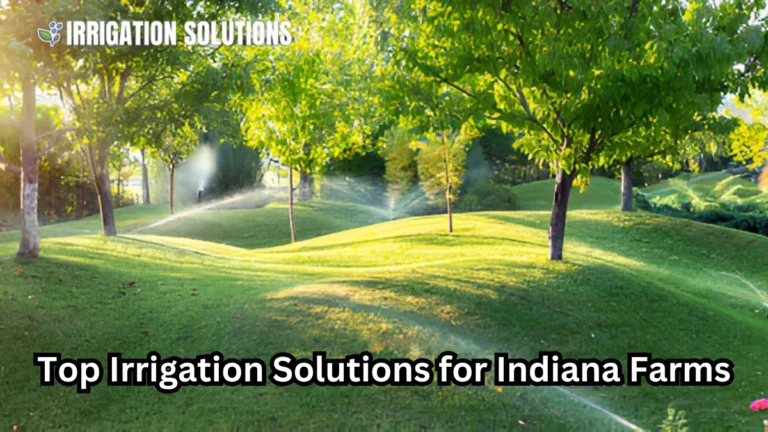best irrigation systems used in agriculture

Efficient irrigation systems are vital for sustainable agriculture, ensuring crops receive adequate water even in unpredictable weather. With agriculture feeding the world’s population, irrigation bridges the gap between rainfall variability and crop water demand. This blog explores the various irrigation systems used in agriculture, their advantages, drawbacks, and applications.
What Are Irrigation Systems?
Irrigation systems are methods and technologies designed to supply water to plants to promote growth and increase yields. These systems are crucial in regions where rainfall is insufficient or unevenly distributed. By delivering water directly to crops, irrigation helps stabilize food production, conserve water, and improve soil health.
Types of Irrigation Systems
Understanding the types of irrigation systems is key to selecting the right one for specific agricultural needs. Below is an overview of the main systems:
Surface Irrigation
Surface irrigation is one of the oldest and simplest methods, where water flows across the soil surface to reach crops. This method is gravity driven and typically used in flat or gently sloping fields.
Pros:
- Cost-effective and easy to implement.
- Requires minimal technical knowledge.
- Suitable for large fields.
Cons:
- High water loss due to evaporation and runoff.
- Can cause waterlogging of soil erosion.
Examples:
- Furrow irrigation: Water flows in small, parallel channels.
- Basin irrigation: Water floods flat fields divided into basins.
Drip Irrigation
Drip irrigation delivers water directly to plant roots using a network of tubes, emitters, and valves. It’s a precision method designed to reduce water wastage.
Advantages:
- Conserves water by up to 50-70% compared to traditional methods.
- Minimizes weed growth by targeting only the plant root zone.
- Reduces disease by keeping foliage dry.
Drawbacks:
- High initial setup cost.
- Requires regular maintenance to prevent clogging.
Case Study: In India, smallholder farmers using drip irrigation for tomato cultivation saw a 30% increase in yield while cutting water use by nearly half.
Sprinkler Irrigation
Sprinkler systems mimic natural rainfall by spraying water over crops through nozzles or sprinklers. It’s suitable for various soil types and crops.
Benefits:
- Provides uniform water distribution.
- Ideal for irregularly shaped fields.
- Reduces labor requirements.
Disadvantages:
- Prone to wind interference, leading to uneven watering.
- High energy consumption for water pumping.
Best Use: Sprinkler systems are often used for crops like wheat, maize, and vegetables.
Center Pivot Irrigation
Center pivot systems are automated, consisting of long pipes mounted on wheeled towers that rotate around a central pivot point.
Key Features:
- Covers large circular areas efficiently.
- Can be programmed for precise water application.
Pros:
- Saves labor through automation.
- Delivers consistent irrigation.
Cons:
- Expensive to install and maintain.
- Unsuitable for small farms.
Fact: A single center pivot system can irrigate up to 130 acres in a single rotation.
Subsurface Irrigation
Subsurface irrigation involves placing water delivery pipes below the soil surface, directly reaching plant roots.
Advantages:
- Eliminates surface evaporation.
- Enhances root zone water availability.
Challenges:
- High installation cost.
- Difficult to monitor and maintain.
Applications: Widely used in vineyards and orchards where precise water management is essential.
Irrigation System Selection Factors
Choosing the right irrigation system depends on several factors:
| Criteria | Considerations |
| Crop Type | Water requirements vary between crops (e.g., rice vs. maize). |
| Soil Type | Sandy soils need frequent irrigation, while clay retains water longer. |
| Climate | Arid regions benefit from water-efficient systems like drip irrigation. |
| Farm Size | Larger farms may favor automated systems like center pivot. |
| Budget | Initial costs and long-term maintenance are critical factors. |
Sustainable Irrigation Practices
Adopting sustainable irrigation practices ensures resource conservation while boosting productivity:
- Rainwater Harvesting: Collect and store rainwater for future use.
- Scheduling: Irrigate during cooler times of the day to reduce evaporation.
- Soil Moisture Sensors: Use technology to monitor soil water levels and irrigate only when needed.
- Crop Rotation: Grow water-efficient crops in rotation to reduce strain on water resources.
Technological Innovations in Irrigation
Modern advancements are transforming irrigation, making it more efficient and environmentally friendly:
- Smart Irrigation Systems: Use IoT devices to automate irrigation based on weather data.
- Drones: Monitor field conditions and identify areas needing irrigation.
- Solar-Powered Pumps: Reduce dependency on fossil fuels while providing energy efficient water delivery.
Example: A farm in California implemented solar-powered smart irrigation, reducing water usage by 25% while saving $10,000 annually on electricity costs.
Challenges in Irrigation Management
Despite advancements, irrigation faces several challenges:
- Water Scarcity: Overuse and mismanagement of water resources.
- Infrastructure Costs: High costs deter small-scale farmers.
- Climate Change: Altered rainfall patterns and extreme weather increase irrigation demand.
- Salinization: Poor drainage leads to salt accumulation, reducing soil fertility.
The Future of Irrigation
The future of irrigation lies in integrating technology and sustainability. As global water resources become scarcer, innovations like precision irrigation and AI based systems will play a pivotal role in meeting agricultural demands.
Quote:
“Sustainable irrigation is not just about saving water; it’s about securing the future of food production.” Dr. John Smith, Agricultural Scientist.
Conclusion
Irrigation systems are indispensable for modern agriculture, enabling farmers to grow crops in challenging environments. By understanding the pros and cons of each system and embracing sustainable practices, farmers can maximize productivity while conserving water. As technology evolves, the adoption of smart and efficient irrigation systems will pave the way for a more resilient agricultural future.






